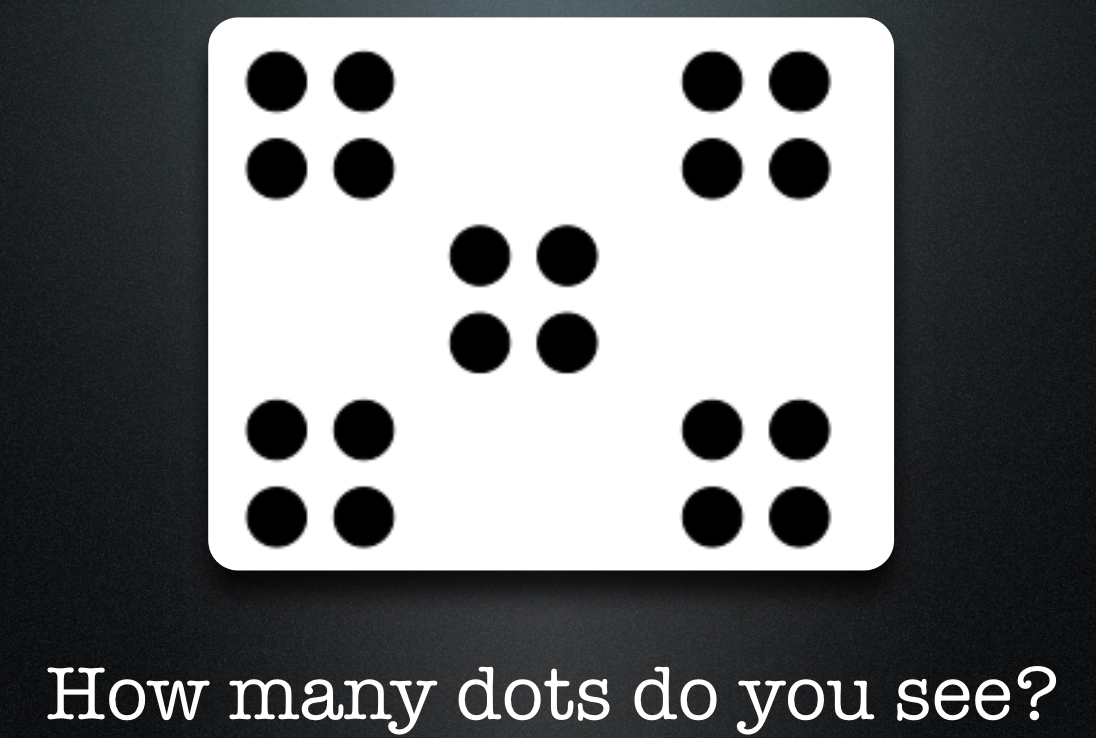Subitizing: On the Road to Mental Math
Why can’t my students mentally manipulative numbers?
Why can’t my students adjust numbers to make them friendly for computation?
The answer: Subitizing
Subitizing is the quick recognition of a quantity of objects without counting (Clements & Sarama, 2007). There are two types of subitizing.
Perceptual subitizing is being able to see a quantity and just know how many there are. For example, children can grab two cubes, one in each hand, without counting. They see two cubes and can say there are two. Generally, people can perceptually subitize up to four.
Conceptual subitizing is still quickly recognizing how many but you may see parts of units to help. For example, a child might see a playing card with eight hearts as four hearts and four hearts and know this is eight.
Conceptual subitizing can become more complex by using more units within units. But the quantities can still be quickly recognized because they are organized into familiar arrangements or patterns, like dots on dice, ten-frames, or arrays. Here are some examples:
By engaging in subitizing activities, children develop mental images of quantities. Research shows that subitizing develops children’s understanding of the value of numbers and the relationships among numbers.

Subitizing also develops children’s spatial structuring and spatial relations of both quantities and shape.

And, subitizing supports children’s ability to develop, test, and transfer mental math strategies (NRC, 2009).
Quick images are an effective routine for engaging students in subitizing. Introduce quick images by having students cover the quick image and count how many. Then, move on to matching quick images by having students create a set that matches the quick image. Finally, flash the quick image for 3 to 5 seconds. Students can build, draw, or describe what they see.

I use Quick Image Cover Up and Quick Image Match as independent tasks with my four-year-old students. I use the routine of Quick Image Flash to warm-up before we start work, to close our work time, or to transition between activities. We also play partner card games using the quick images as playing cards.
Resources
For arrangements of dots less than 10:
- Richardson, K. (1998). Developing Number Concepts: Counting, Comparing, and Pattern. Dale Seymour Publications.
- Van de Walle et al. (2014). Teaching Student-Centered Matheamtics: DEvelopmentally Appropriate Instruction for Grades PreK-2. Pearson.
For arrangements of multiple groups of dots, see our free, downloadable resource: Quick Images – Multiple Groups of Dots.
References
Clements, D.H. & Sarama, J. (2007). Early childhood mathematics learning. In F.K. Lester, Jr. (Ed.), Second Handbook of Research on Mathematics Teaching and Learning (pp. 461-555). New York: Information Age.
National Research Council (2009). Mathematics Learning in Early Childhood: Paths Toward Excellence and Equity. Committee on Early Childhood Mathematics, Christopher T. Cross, Taniesha A. Woods, and Heidi Schweingruber (Eds.). Center for Education, Division of Behavioral and Social Sciences and Education. Washington, D.C.: National Academy Press.
